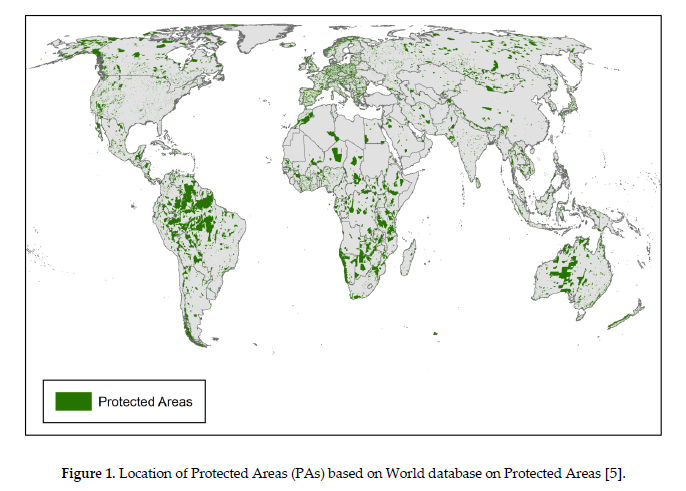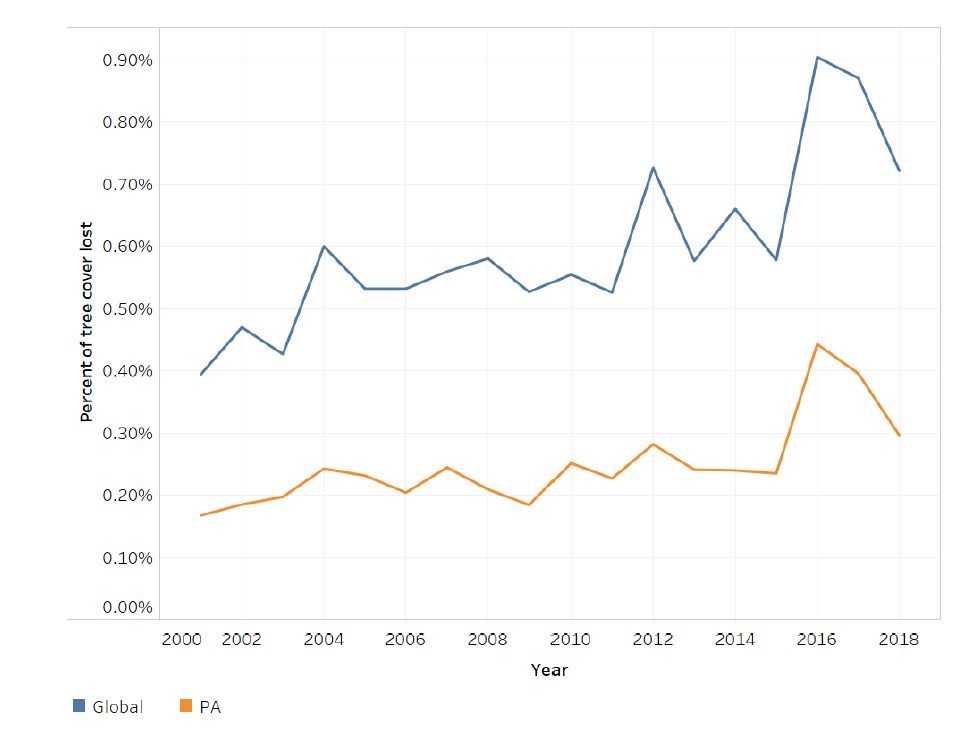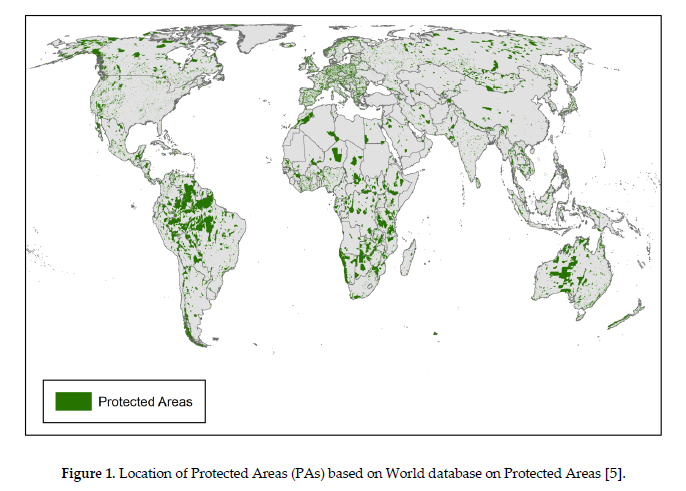This article may reference legacy company names: Continental Mapping, GISinc, or TSG Solutions. These three companies merged in January 2021 to form a new geospatial leader [Axim Geospatial].
A project I've worked on this year was recently published in a scientific journal. Using global land cover data, raster analysis, GIS tools and data visualization, the team aimed to answer the question: What is threatening global forests?
Challenge
Global forests provide vital ecosystem services such as clean air and water, greenhouse gas reduction, and habitat for a variety of biodiverse species. Around the world forests are facing threats of deforestation due to anthropogenic and non-anthropogenic forces such as wildfire, pests, urbanization, logging, and agricultural practices such as grazing and cropland production. Here, we used global data sources to investigate forest loss in protected areas (PAs).
Methods/Approach
Using global maps of protected areas (World Database on Protected Areas (WDPA), 2017), tree cover loss (Global Forest Change, 2001-2018), and land cover (European Space Agency Climate Change Initiative, 2005, 2010, and 2015), we assessed forest loss both within and external to PAs. The WDPA is provided in vector format (Figure 1) which we converted to a 30 meter raster grid.

Figure 1: Protected Areas according to the World Database on Protected Areas.
Our analysis was restricted to forest areas with greater than or equal to 50% canopy cover in the year 2000. At the pixel level, we calculated whether forest loss occurred during each of these three time periods: 2001–2004, 2005–2009, and 2010–2014. We then categorized each forest loss pixel to a land cover type in the year immediately following each of these periods: 2005, 2010, and 2015, respectively. The ArcGIS Spatial Analyst Tabulate Area tool was used to determine forest loss by land cover type within country boundaries.
Results
We found between 2001 and 2018, the absolute area of protected tree cover increased due to countries designating additional land as PAs. However, the annual rate of tree cover loss inside PAs nearly doubled during this time period. Further, non-protected forests experience loss at higher rates than PAs but the temporal trend of forest loss in PAs is markedly similar to that of all forest loss globally (Figure 2).

Figure 2: Global and Protected Area trends of forest loss.
Global PAs lost 25.5 million hectares of forest, or 4.1% of their forested area between 2001 and 2018. Forest loss within PAs is typically due to the introduction of shrubland which might indicate new tree growth, agricultural fallows, or pastureland depending on the regional context.
Future applications
Our global approach allowed for direct comparisons across regions, and the identification of hotspots of forest loss where localized strategies can be implemented in order to improve PA management and enforcement. A similar approach can be used at varying spatial scales to examine land cover or land use changes over time such as urbanization, cropland type, and others.
For more information please visit https://www.mdpi.com/1999-4907/11/5/539.
Resources:
- European Space Agency Land Cover https://www.esa-landcover-cci.org/
- World Database on Protected Areas https://www.iucn.org/theme/protected-areas
- Forest loss http://data.globalforestwatch.org/datasets/14228e6347c44f5691572169e9e107ad
Additional Guidance
We hope this article has provided some value to you! If you ever need additional help, don't hesitate to reach out to the Axim team.





